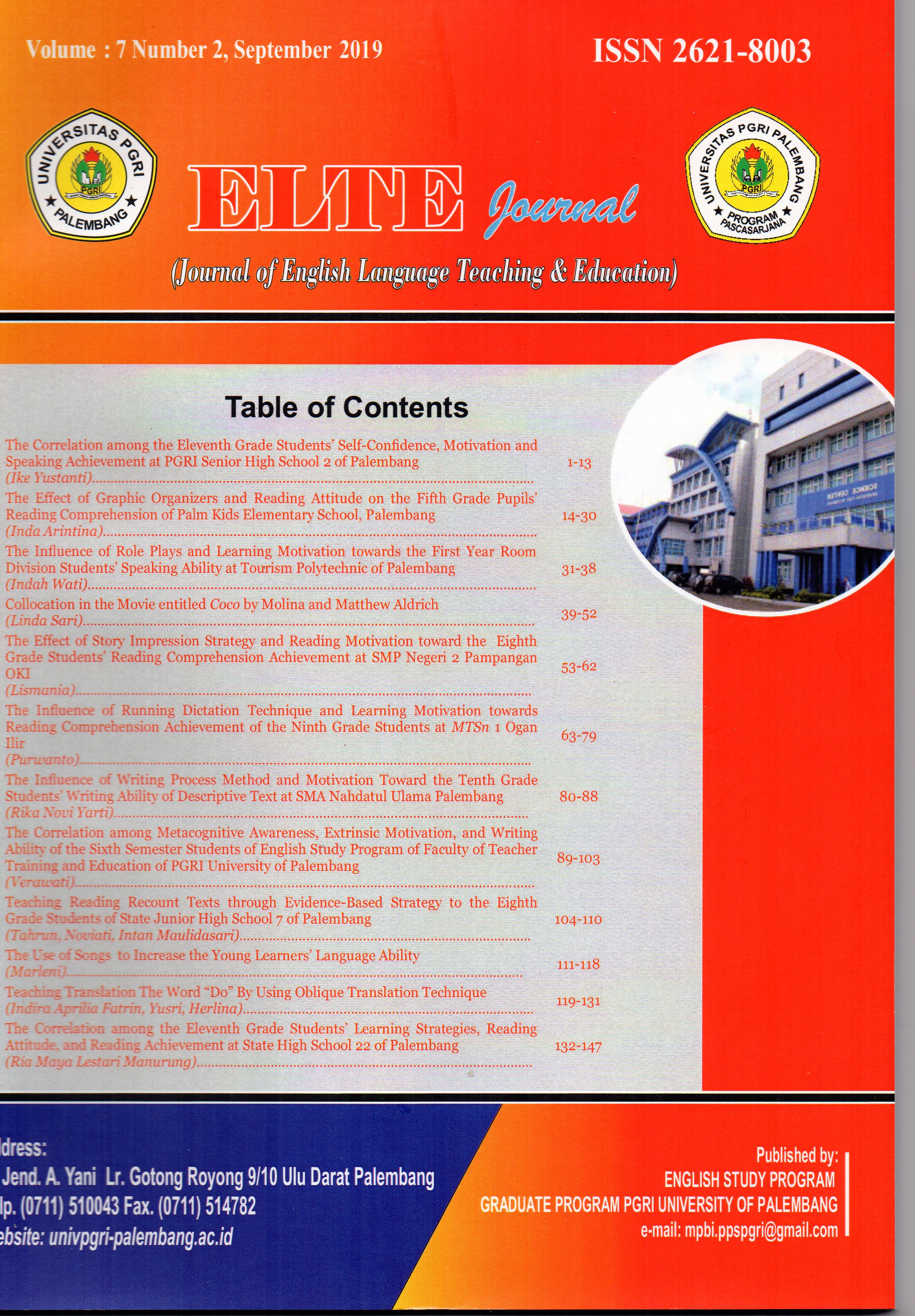TEACHING TRANSLATION THE WORD “DO†BY USING OBLIQUE TRANSLATION TECHNIQUE
DOI:
https://doi.org/10.31851/elte.v7i2.3571Abstract
Abstract
The objective of this study was to find out if there is any significant difference between the translation competence of the eleventh grade students who are taught using oblique translation technique and those who are not at State Vocational High School 2 of Palembang. This study used true experimental design. The population of this research consisted of all the eleventh grade students majoring (Industrial) Modeling Design and Building Information of State Vocational High School 2 Palembang. The sample was 70 students, 35 students in experimental group from XI DPIB and 35 students in control group from XI DPIB 2. In collecting data, students were given 20 questions consisted of translation of the word “Do†in sentential context. The data was analyzed by using Independent sample test in SPSS 20 Computer program. The result of this study showed that in the experimental group, mean was 71.57. Meanwhile, in the control group, the mean was 45.42. On the other hand, the result of t-obtained was 10.047. In addition, its critical value at 0.05 significance level with 68 (df) was 1.668. Since the t-obtained was higher than t-table, Ho was rejected and Ha was accepted. As a final result, that there was significant difference between the translation competence of the eleventh grade students who are taught using oblique translation technique and those who are not at State Vocational High School 2 of Palembang.
Keywords: Teaching, Translation, Do, Oblique Translation Strategies
Downloads
Published
Issue
Section
License

ELTE JOURNAL oleh http://www.univpgri-palembang.ac.id/e_jurnal/index.php/elte disebarluaskan di bawah Lisensi Creative Commons Atribusi-BerbagiSerupa 4.0 Internasional.




.png)

.jpg)
.png)

